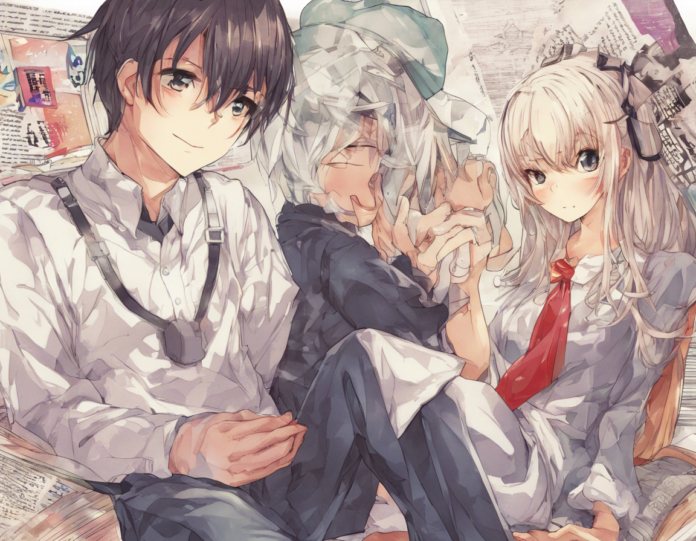So, you’ve stumbled upon the intriguing world of doujinshi and are curious to learn more about this fascinating aspect of Japanese pop culture? Doujinshi, which translates to “fan works” or “self-published works,” refers to fan-made unofficial manga and anime publications that are created by enthusiasts for enthusiasts. These fan works can center around popular series, original stories, or even real-life celebrities and bands. If you’re new to the world of doujinshi and are looking to delve deeper into this unique subculture, then you’ve come to the right place. In this beginner’s guide, we will explore the origins, types, creation process, legality, and where to find doujinshi, as well as provide some insight into the appeal of these fan creations.
Origins of Doujinshi
Doujinshi culture in Japan traces its roots back to the late 1970s, with the emergence of fan-made comics creating a vibrant subculture within the larger manga and anime community. The term doujinshi originally referred to amateur manga drawn by fans, but it has since evolved to encompass a wide range of fan works, including novels, games, music, and more. Doujinshi circles, known as “comikets,” began to form at conventions where creators could share and sell their works to fellow fans, leading to the growth of a thriving fan community.
Types of Doujinshi
There are various types of doujinshi catering to different interests and genres. Some of the common categories include:
Parody Doujinshi
These are fan works that parody existing manga, anime, or characters, often incorporating humor or satire into their storytelling.
Yaoi and Yuri Doujinshi
Yaoi doujinshi focus on relationships between male characters, while yuri doujinshi explore romantic or sexual relationships between female characters.
Original Doujinshi
Creators develop their own original characters, stories, and settings, offering a fresh take on the traditional manga and anime formats.
R18 Doujinshi
These are adult-oriented doujinshi that contain explicit content such as sexual scenes or graphic violence. It’s important to be aware of the content before delving into this category.
Creating Doujinshi
The process of creating doujinshi involves a blend of creativity, passion, and skill. Creators start by conceptualizing their story, characters, and art style before moving on to the actual drawing and writing phase. Many doujinshi artists use digital tools to design and illustrate their works, while some prefer the traditional pen-and-paper approach. Once completed, doujinshi are often printed in limited quantities and sold at conventions or through online platforms.
Legality of Doujinshi
The legality of doujinshi exists in a gray area due to its nature as fan works based on existing intellectual properties. While some creators and publishers turn a blind eye to fan creations, others may enforce copyright laws to protect their works. It’s essential for doujinshi creators to be mindful of intellectual property rights and to seek permission or avoid infringing on copyrighted material.
Where to Find Doujinshi
For those interested in exploring the world of doujinshi, there are several avenues to discover and purchase these fan works:
-
Comiket: Attending the semiannual Comiket conventions in Tokyo is a must for doujinshi enthusiasts, as it offers a vast array of fan works across different genres.
-
Online Marketplaces: Websites like Melonbooks, Toranoana, and DLSite provide a platform for creators to sell their doujinshi online, making it accessible to a global audience.
-
Social Media and Forums: Engaging with doujinshi communities on platforms like Twitter, Pixiv, or dedicated forums can help fans discover new works and connect with like-minded individuals.
Appeal of Doujinshi
The allure of doujinshi lies in its creative freedom, allowing fans to reinterpret beloved characters and stories in unique and imaginative ways. For creators, doujinshi serve as a platform to express their love for a particular series or genre, experiment with different art styles, and connect with fellow fans who share their passion. Fans often appreciate doujinshi for their artistic quality, niche content, and the sense of community that surrounds these fan-created works.
FAQs (Frequently Asked Questions)
1. Are doujinshi legal?
Doujinshi exist in a legal gray area, as they are fan works based on existing intellectual properties. While some creators and publishers tolerate doujinshi, others may enforce copyright laws.
2. Can anyone create doujinshi?
Yes, anyone with a passion for manga and anime can create doujinshi. It’s an avenue for fans to express their creativity and love for a particular series or genre.
3. What software do doujinshi artists use?
Doujinshi artists often use digital tools like Clip Studio Paint, Photoshop, or Procreate for illustration and design. Traditional artists may opt for pen and paper.
4. How can I sell my doujinshi?
Creators can sell their doujinshi at conventions like Comiket, through online platforms like Melonbooks or Toranoana, or by setting up their own online store.
5. Is there a market for original doujinshi?
Yes, there is a market for original doujinshi that feature unique characters and stories. Fans appreciate fresh takes on traditional manga and anime genres.
In conclusion, doujinshi culture offers a vibrant and dynamic space for fans to express their creativity, connect with like-minded individuals, and immerse themselves in the world of manga and anime from a new perspective. Whether you’re an aspiring creator looking to share your fan works or a curious enthusiast eager to explore diverse fan creations, doujinshi presents a rich tapestry of storytelling, artistry, and community waiting to be discovered.

